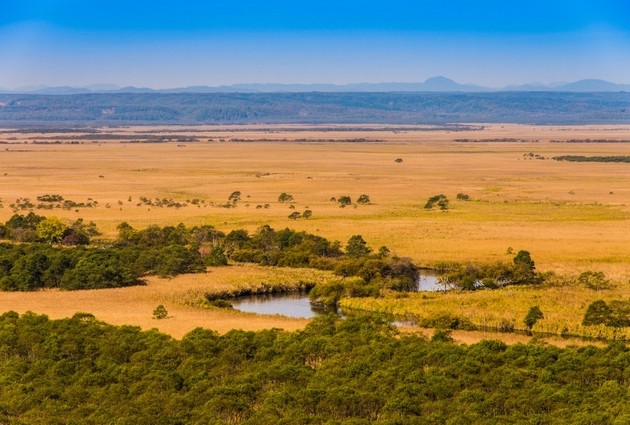
In Eastern Hokkaido, there are many fascinating tourist spots and highlights, such as Shiretoko Peninsula, Kushiro Marshland, and Abashiri.
Let us introduce you to the highlights and sightseeing spots that are familiar to the locals in Eastern Hokkaido.
We will also share information about dining and events that can only be enjoyed in Eastern Hokkaido.
We’d love to have you visit Eastern Hokkaido at least once. Please take a moment to read this article at least once before you visit Eastern Hokkaido. We’d love to have you feel and enjoy to the fullest the charms that can only be experienced in Eastern Hokkaido, a place blessed with abundant nature.
Table of contents
- 1 The whereabouts of Eastern Hokkaido
- 2 Sights of Eastern Hokkaido
- 2.1 Shiretoko Peninsula
- 2.2 Lake Mashu & Lake Kussharo
- 2.3 Lake Akan
- 2.4 Kushiro Marsh & Kushiro City
- 2.5 Abashiri
- 2.6 Lake Saroma & Mombetsu
- 2.7 Kitami
- 2.8 Tokachi & Obihiro
- 2.9 Nakashibetsu & Betsukai
- 2.10 Nemuro & Akkeshi
- 3 Highlights of winter in Eastern Hokkaido
- 4 How to get to Eastern Hokkaido
- 4.1 By airplane
- 4.2 By train
- 4.3 By intercity bus
- 4.4 By car
- 5 In conclusion
The whereabouts of Eastern Hokkaido
Eastern Hokkaido refers to the area within the jurisdiction of Abashiri, Tokachi, Kushiro, and Nemuro, situated in the eastern part of Hokkaido.
The area on the east side of Tokachi and Obihiro will be featured in this article.
In Eastern Hokkaido, there are numerous spots where you can fully enjoy rich lakes and nature, and Eastern Hokkaido is full of charms that can’t be found in Sapporo or central Hokkaido.
Sights of Eastern Hokkaido
Shiretoko Peninsula
First, we’d like to show you Shiretoko Peninsula.
Shiretoko was registered as a UNESCO World Natural Heritage site in 2005, and it is an area that has been gaining more and more attention. Shiretoko Goko Lakes is a prime location from where you can immerse yourself in this world heritage site.
Shiretoko Goko Lakes is situated at the foot of the mountains known as the Shiretoko mountain range, which is on the Shiretoko Peninsula.

There are two routes to enjoy Shiretoko Goko Lakes, the Elevated Wooden Path and the Ground Pathways.
The Elevated Wooden Path extends about 800 meters. Since it is free of charge, you can easily experience the magnificent Shiretoko Goko Lakes.
In contrast, the Ground Pathways offers a 3km-long and a 1.6km-long course. Depending on the active period of brown bears, usage of the path varies. For those seeking to take the Ground Pathways, please check path usage on the homepage.
It is recommended to experience the Shiretoko Goko Lakes in whichever way depending on the schedule of your trip and your physical condition.

Utoro is the ideal base during your tour in Shiretoko.
There are tourist boats so you can enjoy the Shiretoko Peninsula to your heart’s content as well as various lodging facilities.
On a tourist boat, you can see brown bears and more, allowing you to experience Shiretoko in a way that’s only possible on a cruise.

In Utoro, there is also the Kamuiwakka Hot Waterfall, a river where hot springs that flow from halfway up Shiretoko-lozan stream in.
There are slipping accidents every year at this site.
While it feels pleasant to explore around the warm river, please be very careful as you enjoy it.

Rausu is located on the east coast of the Shiretoko Peninsula.
What we’d love you to see in Rausu is wild animals.
You can see sperm whales, killer whales, and Dall’s porpoises from your tourist boat. In winter, you can see drifting ice as well as Steller’s sea eagles and White-tailed eagles (varies by season).
Encountering wild animals while immersed in the beautiful nature of Shiretoko Peninsula is incomparable.
Also, you can eat delicious seafood in Rausu, as various fish are caught throughout the year.
Lake Mashu & Lake Kussharo
Next, we’d like to show you Lake Mashu and Lake Kussharo. First, let us introduce Lake Mashu.
Lake Mashu is a caldera that is approximately 20km in circumference and approximately 19km2 in area. Lake Mashu is highly transparent. It is often shrouded in mist and it is also called “Misty Lake Mashu.”
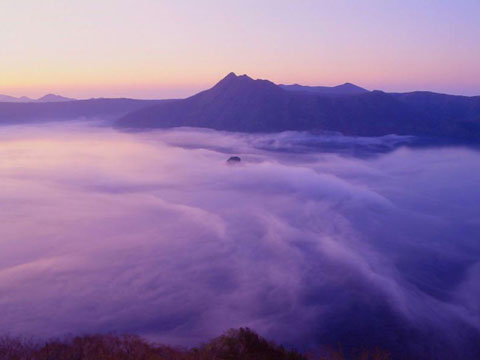
There are three viewing spots for Lake Mashu: Mashu 1st Observatory, Mashu 3rd Observatory, and Uramashu Observatory.
The most popular spot is Mashu 1st Observatory. You can also see Mt. Kamui and Kamuishu Island along with the beautiful lake.
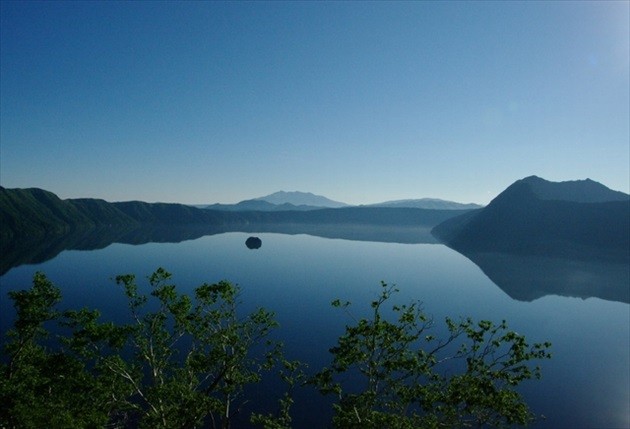
At Lake Mashu, if the season and conditions permit, you will be able to see the incredible sea of clouds and the starry sky.
You will be struck by the world of stars stretched across the sky above quiet Lake Mashu at night. The sunrise is the perfect time to see the sea of clouds.
In order to see the sea of clouds and the starry sky, you can enjoy your trip with an efficient schedule by staying at Kawayu Onsen nearby.
Kawayu Onsen is a hot spring town that boasts “water flowing directly from the hot spring source.”
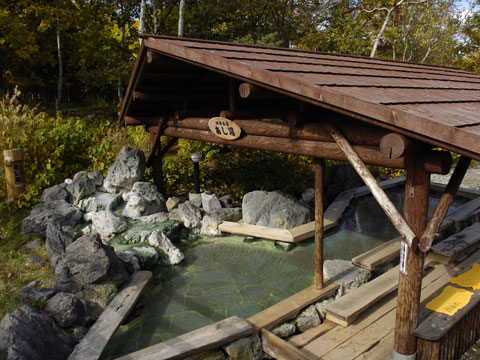
There are also foot baths and you can easily enjoy the water flowing directly from the hot spring source.
If time allows, gaze at the beautiful scenery, stay at Kawayu Onsen and soak yourself in the hot spring to rest and refresh your body.
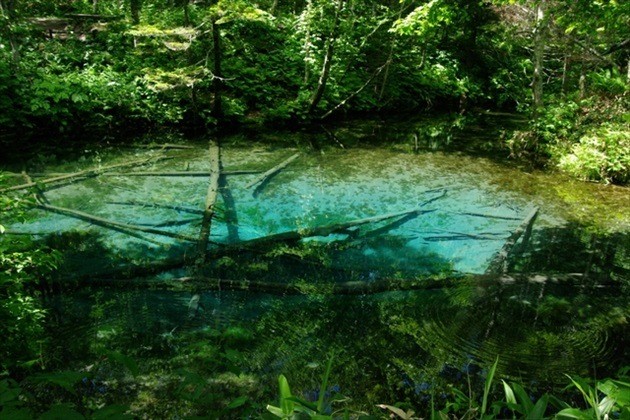
There is also “Kami no Koike pond (Child of God),” a small pond on a mountain where groundwater wells up from Lake Mashu.
It is located approximately 1 hour and 20 minutes away from JT Mashu Station by taxi and it is gaining popularity as a sacred site.
Lake Kussharo is approximately 57cm in circumference and approximately 79km2 in area. There is an island floating in the center of the lake.
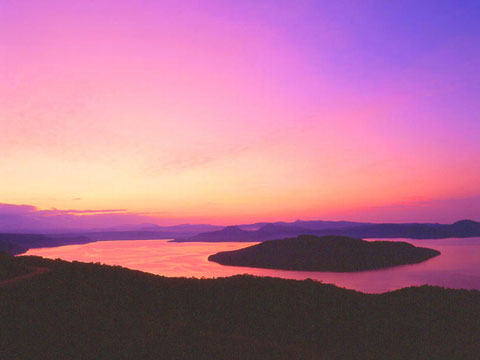
This island in the lake is 12km in circumference and it is said to be the largest island in Japan within a freshwater lake.
Bihoro Pass and Tsubetsu Pass are recommended spots to enjoy a panoramic view of Lake Kussharo.
Also, the dynamic “sea of clouds” that can be seen early in the morning (if the climatic conditions allow) has been gaining attention lately.
The photograph below is of a sea of clouds taken from Tsubetsu Pass.
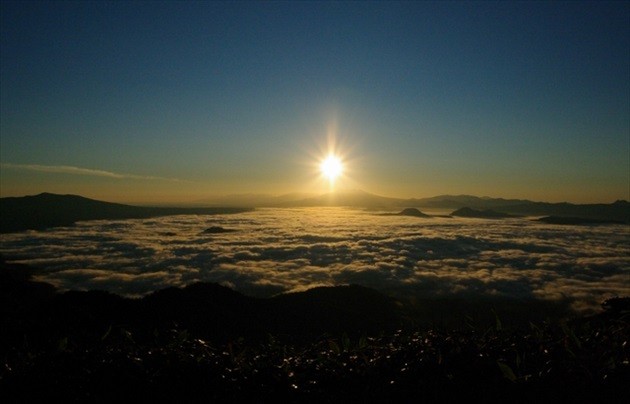
Lake Akan
Next, we’d like to show you Lake Akan.
Lake Akan is 30km in circumference and 13.28km2 in area and located north of Kushiro.
We recommend riding an Akan Sightseeing Cruiser to enjoy Lake Akan.
You can also view spots like Mount Oakan, Mount Meaka, Kojima, and Oshima as you tour around Lake Akan.

Lake Akan is famous for Marimo (Aegagropila linnaei), a special natural treasure.
According to many years of research, Lake Akan and Mývatn in Iceland are said to be the only places where spherical Marimo grow in colonies.
On Churui Island, there is a “Marimo Exhibition and Observation Center” where you can learn about Marimo.

There is a hot spring town at Akan Lake Shore. The hot spring water at Akanko Onsen is good for neuralgia and rheumatism.
Please enjoy your time relaxing while soaking in the hot spring.
There is a lake called “Onneto” at the western foot of Mount Oakan on the east side of Lake Akan.
Since the color of the lake changes due to the season and other factors, it is also called Goshikinuma (lake of five colors). Why not also stop by Onneto when you visit Lake Akan?
Kushiro Marsh & Kushiro City
Next, we’d like to show you Kushiro Marsh. It is Japan’s largest marshland and home to various animals, including Japanese cranes.
It is also Japan’s first Ramsar Convention registered site.

At Kushiro Marsh, there are walking trails where you can tour around the marshland on foot. One lap is 2.5km long and it takes about an hour.
You can enjoy the marshland nature up close.
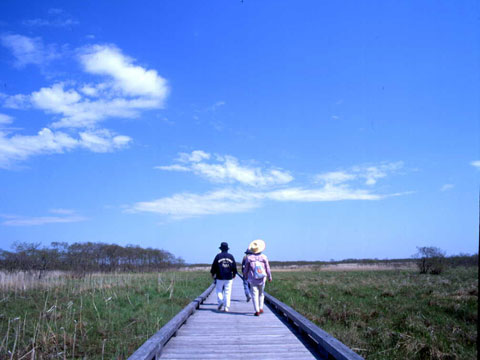
Also, there is the “Kushiro Marsh Observatory” where you can learn from a diorama of the Kushiro Marsh as well as about the appearance of the marshland over the four seasons.
You can also view the marsh and the city of Kushiro from the rooftop.
There are other spots besides here where you can observe the Kushiro Marsh, such as Sarubo Observatory, Kottaro Swamp Observatory, and Hosooka Observatory.
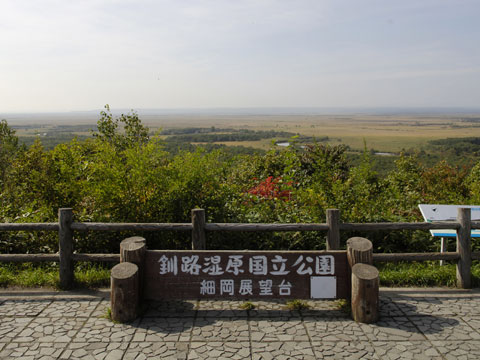
Among them, Hosooka Observatory is known for having the best view.
It is located on the east side of Kushiro Marsh and you can also see the meandering Kushiro River, Kushiro Marsh, Mount Oakan, and Mount Meakan.
It is also known as an observatory where you can behold beautiful sunsets.
Kushiro City, where Kushiro Marsh is situated, is the largest city in Eastern Hokkaido. The city has an abundant ocean and boasts the largest landing volume in Japan.

Robatayaki (fireside-cooking) and kattedon (rice bowl with various raw fish on top) are fresh seafood dishes that you can enjoy in Kushiro City.
You can enjoy the pure flavors of fish with robatayaki, which is a seasonal fish grilled with charcoal.
The warm and fresh grilled fish is juicy and delicious.
Kattedon is a dish you can try at Washo Market in Kushiro City. When you buy rice and select your favorite seafood at the store, staff will place them on top of your rice.
Please arrange kattedon to your liking, as you can taste your favorite seafood as much as you want.

Washo Market was established in 1954 and has the longest history in Kushiro. There are nearly sixty stores lined up and it is also fun to walk around the store after eating kattedon.
Abashiri
Next, we’d like to show you Abashiri City. Abashiri is a place where you can enjoy each season: spring, summer, fall, and winter. In summer, you can experience horse trekking, nature cruising, and canoeing.
Speaking of sightseeing in winter, you cannot miss the drifting ice. It is also fun to ride and cruise on “Drift Ice Sightseeing & Icebreaker Ship Aurora.” You can also enjoy drifting ice at “Okhotsk Drift Ice Museum,” even when it’s not the drifting ice season.
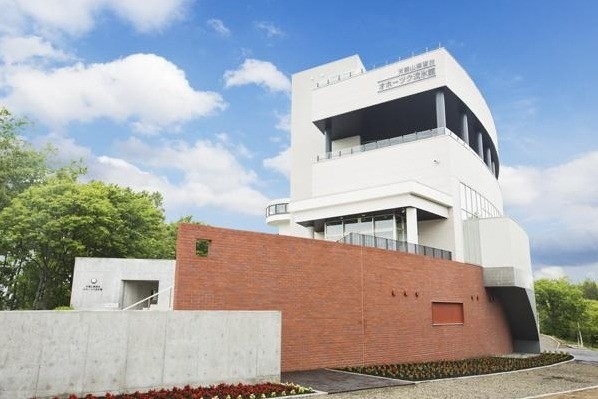
In addition to the exhibition of authentic drifting ice, you can also see animals that live in the Sea of Okhotsk, such as Clione.
Views from the observatory are also recommended. You will enjoy the magnificent views.
In addition, Cape Notoro is a spot famous for its scenery in both summer and winter. It is approximately a 15-minute drive from downtown Abashiri.
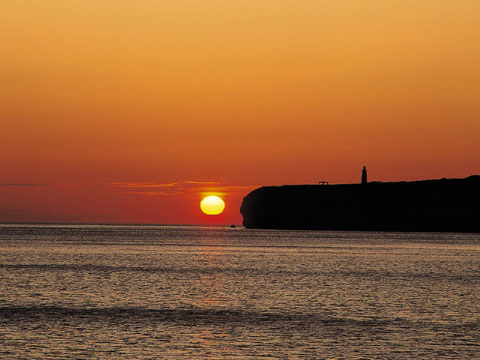
You can see the vast scenery of Lake Notoro, the Sea of Okhotsk, and the Shiretoko mountain range. In winter, you can also observe drifting ice.
“The Chef of South Polar,” starring Masato Sakai, was filmed here.
Abashiri Misaki Farm is adjacent to Cape Notoro, and horses and cows graze there.
Abashiri City is famous for the Abashiri Prison Museum where former Abashiri Prison buildings were relocated and restored.
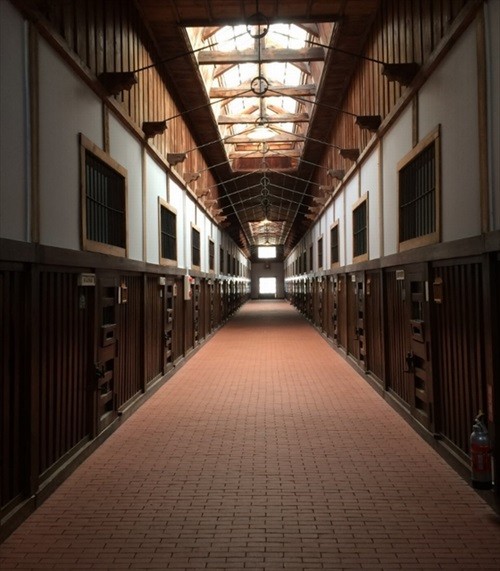
The site area is nearly the size of 3.5 Tokyo Domes. As you tour the museum, you can learn about what the lifestyle was like back then.
In addition, there is a museum shop and an area where you can try prison food.
Lake Saroma & Mombetsu
Next, we’d like to show you Lake Saroma and Mombetsu City.
Lake Saroma is said to be the third largest in Japan.
You can enjoy panoramic views of Lake Saroma at Lake Saroma Observatory. It is situated near the top of Mount Horoiwa, which reaches an altitude of 376m.
The views from here are amazing.
We recommend Piraoro Observatory to look out over Lake Saroma. Also, Cape Kimuaneppu is a good spot to enjoy the sunset from Lake Saroma.
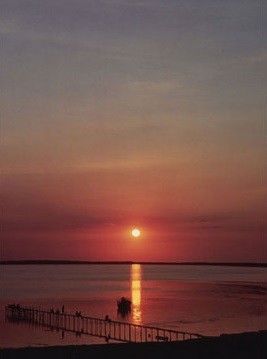
Scallops and oysters are raised at Lake Saroma. In particular, the scallops of Saroma are large and plump.
You will be surprised at how sweet they are when you taste them. We would love you to try our fresh scallops and oysters there.
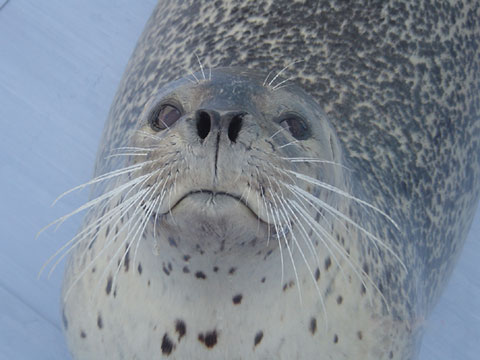
Mombetsu City is located about halfway up Hokkaido’s Sea of Okhotsk coastline.
The city is known for abundant seafood, including scallops and hairy crabs.
At “Okhotsk Tokkari Center” in Mombetsu City, you can see seals up close. “Tokkari” means “seals” in Ainu.
Speaking of Mombetsu City, drifting sea ice is a must-see. You can ride on “Drift Ice & Icebreaker Ship Garinko-go II” and enjoy the dynamics of drifting ice.
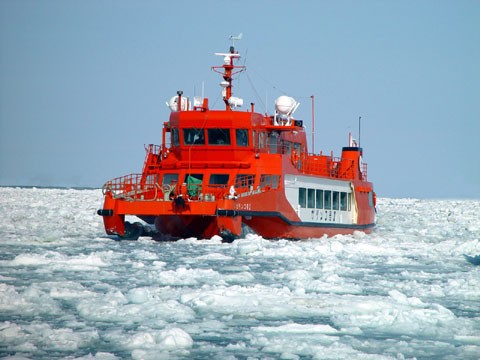
Although you can only see drifting ice in person during the winter, you can learn about drifting ice regardless of the season at the Okhotsk Sea Ice Museum of Hokkaido, “GIZA.” Please take the opportunity to visit the museum.
Kitami
Next, we’d like to show you Kitami City.
At approximately 1428km2, Kitami City is the largest city in Hokkaido by area and the fourth largest in Japan.
Dogtooth violet, lilium pensylvanicum, and chrysanthemum morifolium are some of the flowers that are said to represent Kitami City.
The biggest chrysanthemum festival in Hokkaido is held in Kitami City. The festival is held on Mint Road at Kitami Station South Multipurpose Square.
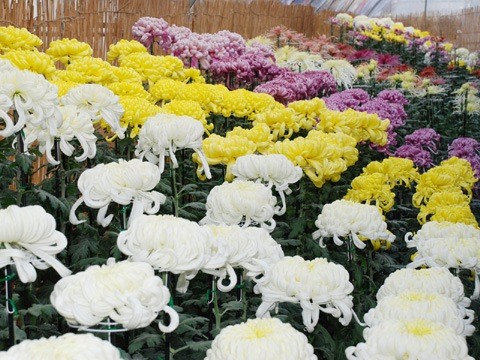
Kitami was once the location where approximately 70% of the world’s supply of peppermint was produced. At “Kitami Mint Memorial Museum,” you can learn about this history.
After enjoying Kitami City to the fullest, it’s a good idea to soak and relax in a hot spring. “Onneyu Onsen Town” is a famous historical hot spring that opened in 1899.

“Onne” means “large hot water” in Ainu. “Onneyu Onsen” is popular among the locals as having water that ensures a beautiful skin.
Also, Bihoro Pass is located within an hour drive from Kitami Station. It is located in Akan National Park on National Route 243, which connects Kushiro and Kitami.
As one of the leading spectacular panoramic views in Japan, why not visit it at least once in your lifetime?
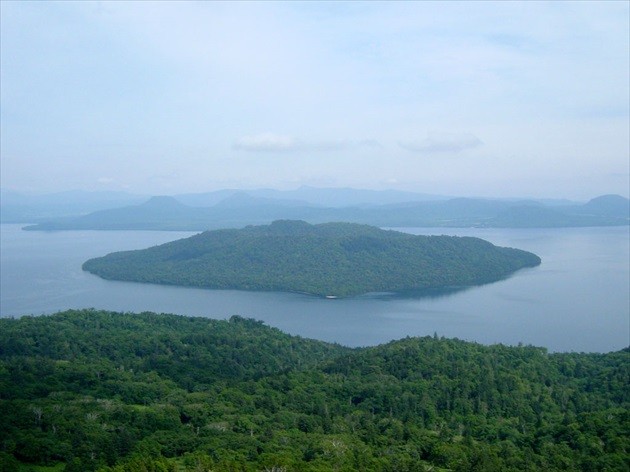
Tokachi & Obihiro
Next, we’d like to show you Tokachi and Obihiro.
Obihiro City is located in the center of the Tokachi Plain.
Obihiro City is an area known for agriculture and farming. You will see the rural landscape in about a 15-minute drive from downtown Obihiro.
If you want to enjoy flowers and greenery to the fullest when you visit Hokkaido, we recommend you to visit “Hokkaido Garden Pass.”
It is called “Hokkaido Garden Pass” because numerous gardens gather along the approximately 250km-long pass connecting Osetsu, Furano, and Tokachi.
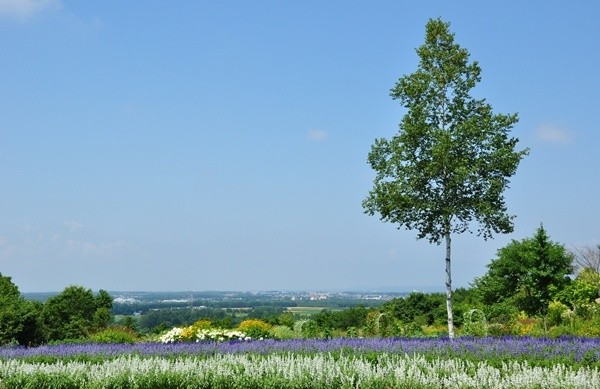
It is popular as a beautiful sightseeing route in the northern country.
In Tokachi & Obihiro, you can find Manabe Garden and Shichiku Garden. Enjoy the unique gardens of Hokkaido. Gazing at the greenery in the clear air will refresh your mind.
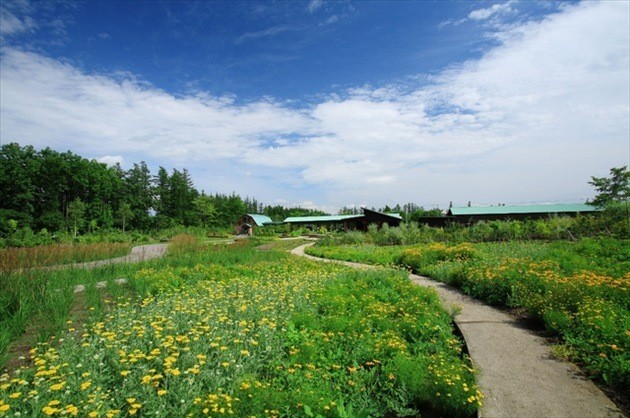
Also, there is Yachiyo Farm at the foot of Mount Poroshiri in Tokachi. Horses and cows graze on a stretch of land that is as large as about 210 Tokyo Domes.
There is also the park golf course as well as a restaurant, “Cowbell House,” where local ingredients are served.
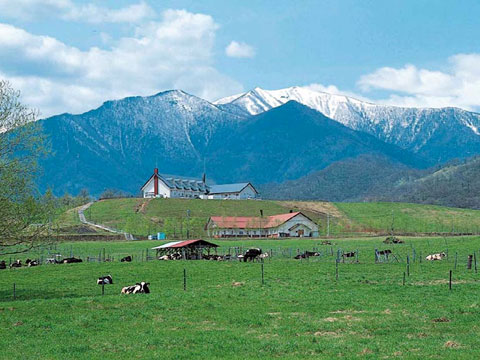
Adjacent to these are Tokachi Farm and Hanabatake Farm, where you can enjoy nature to the fullest.
Speaking of Obihiro City, butadon (a bowl of rice topped with pork) and sweets are famous.
Butadon has simple flavors with a sweet and spicy sauce, so you can thoroughly taste the sweetness of the pork.
When you visit Obihiro City, please try the butadon made with juicy meat.
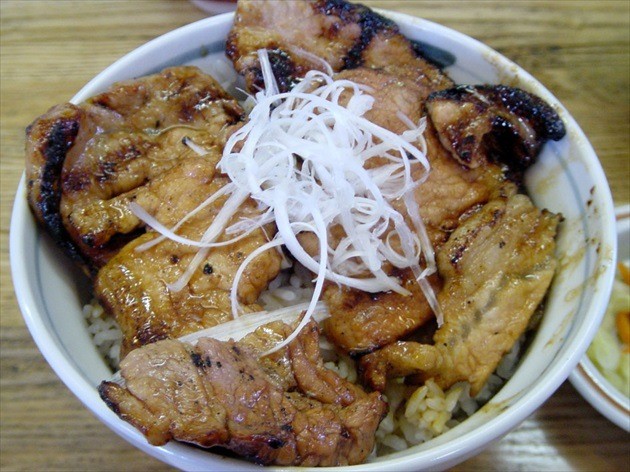
Also, there are sweets shops in Tokachi that represent Hokkaido, such as Rokkatei. We personally recommend the cranberry baked sweet potatoes.
It has the bold flavors of sweet potatoes and it’s delicious.
In Obihiro City, there are many hotels with hot springs. Have delicious meals, soak in a hot spring, and take your time to let your body recover from your trip.
Nakashibetsu & Betsukai
Next, we’d like to show you Nakashibetsu and Betsukai.
First, let us introduce Kaiyodai in Nakashibetsu. It is an approximately 15-minute drive from Nakashibetsu Airport. It features unique sceneries of Hokkaido, including farms and lattice-shaped windbreaks. We would love you to see the views from Kaiyodai at least once in your life time.
Next, let us introduce Uramshu Observatory. This is located approximately 50km from Nakashibetsu Airport.
When it comes to “Lake Mashu,” you usually observe it from Teshikaga. But this spot allows you to observe Lake Mashu from the other side.
It turns foggy less frequently than Teshikaga. Enjoy a different side of Lake Mashu.
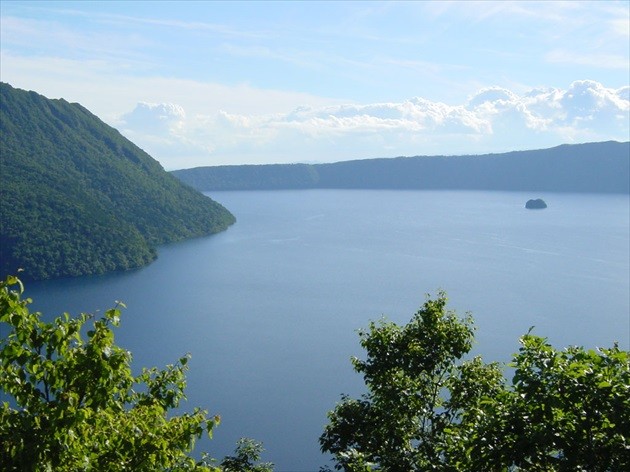
Yoroushi Onsen is a 20-minute drive from Uramashu Observatory. It is a quiet hot spring town surrounded by deep mountains. The open-air baths along the river at “Yuyado Daiichi” and “Hotel Yoroshi” are popular.
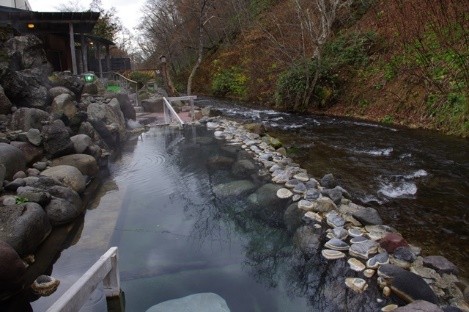
Next is Betsukai Town. The total area is 1,320km2. Betsukai Town boasts Japan’s biggest production volume of raw milk.
In addition, they are famous for their specialty foods, like scallops and Pandalus shrimp. Notsuke Peninsula is about a one-hour drive away from Betsukai Town.

Notsuke Peninsula is approximately 26km long and located between Shiretoko Peninsula and Nemuro Peninsula.
Here, the sight of firs slowly succumbing to seawater corrosion provides a lasting impression of nature’s fiercer side.
Also, you can see various flowers from May through October. Please also visit Notsuke Peninsula.
Nemuro & Akkeshi
Lastly, we’d like to show you Nemuro and Akkeshi. First, let us introduce Nemuro.
Nemuro is famous for Pacific saury and hanasaki crabs.
Also, there is local gourmet dish called “escaroppu,” which is butter rice with bamboo shoots topped with tonkatsu (deep-fried pork) and demi-glace sauce.
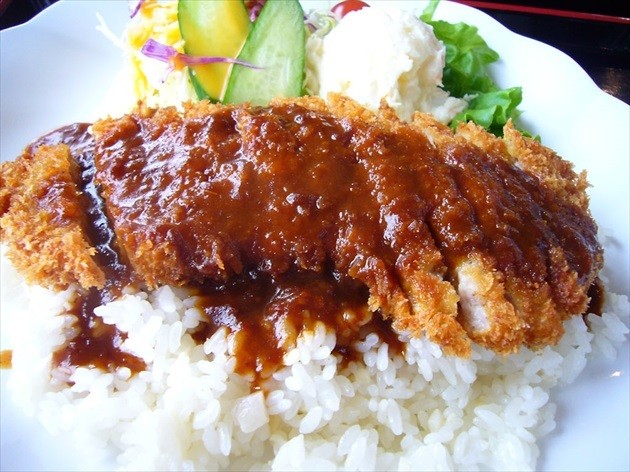
If you come to Nemuro, we recommend going to Cape Nosappu. It is a cape located at the easternmost point of Japan. Its latitude is 43.23 degrees north and its longitude is 145.49 degrees east.
Cape Nosappu Observatory is the oldest in Hokkaido and was first lit up in 1872. The scenery at sunrise and sunset is beautiful.
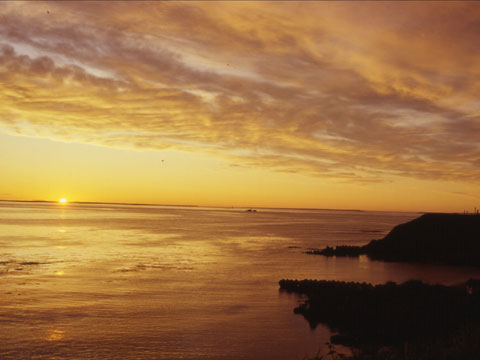
Next is Akkeshi. It faces the Pacific Ocean and is blessed with abundant nature. Akkeshi is known for oysters.
“Akkeshi Oyster Festival” is held in early October every year.
Since oysters in Akkeshi are raised in low temperature water over a long period of time, they are very nutritious. Please give them a try.
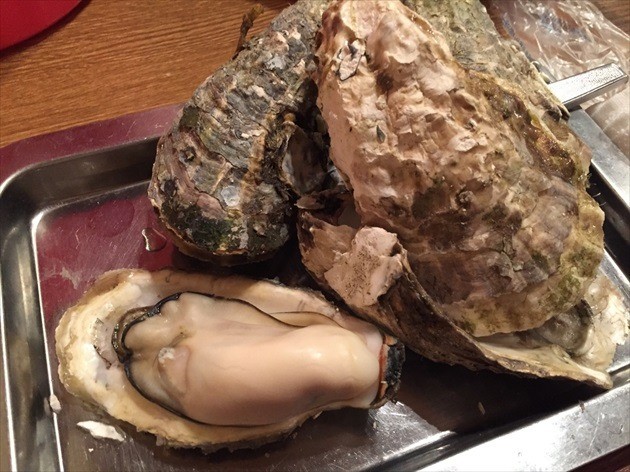
Also, Cape Kiritappu is located between Akkeshi and Nemuro. It is a cape protruding from Kiritappu Peninsula.
Since there are times you see tokkari (seals), it is sometimes called Cape Tokkari. You can feel the spectacular waves.
Highlights of winter in Eastern Hokkaido
Now, we’d like to tell you about winter in Eastern Hokkaido as it turns into a world of snow and ice.
You will see the charms of Eastern Hokkaido, such as the dynamic and vast snow landscapes and natural phenomena. We definitely recommend being prepared for the cold weather.
Drift Ice
Drifting sea ice is something you cannot miss, as it’s the highlight of winter in Eastern Hokkaido.
At the shores of the Sea of Okhotsk, drifting ice comes close to the coast in early February. The blue sea turns to a world of vast white ice.
This drifting ice can only be seen when the right climatic conditions are met and it can only be seen in a limited number of areas throughout the world. You can see the mysterious drifting ice in Abashiri City and Mombetsu City.
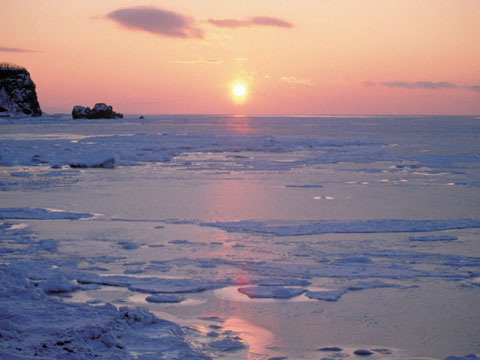
In Abashiri City, make sure to ride “Drift Ice Sightseeing Icebreaker Aurora.” Since it is a large cruise ship, it barely sways. It has a shop and coffee lounge.
You can enjoy drifting ice from the guest rooms on the 1st and 2nd floor as well as from the observatory deck.
You may be able to see seals on the drifting ice.
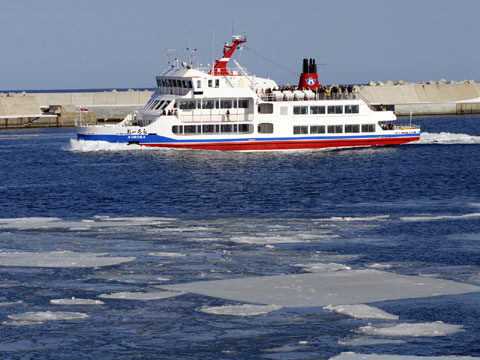
You can cruise on drifting ice if you ride on “Drift Ice Icebreaker Garinko-go II” in Mombetsu Town.
It is very thrilling to pierce drifting ice with huge drills.
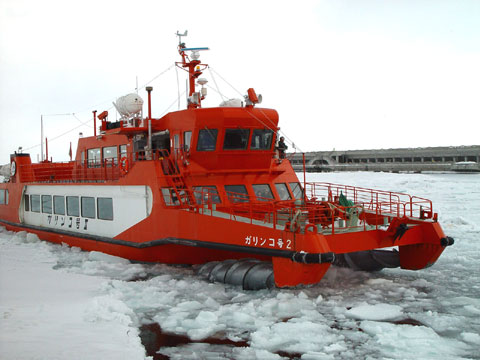
If you experience either of the drifting ice cruises, you will feel as if you can hear the pulse of the vast nature.
It is relaxing to surrender yourself to the majestic scenery.
When you visit Eastern Hokkaido in winter, feel the intensity of drifting ice. We definitely recommend being prepared for the cold weather.
Shiretoko in Winter
Next, we’d like to tell you about winter in Shiretoko.
Some people may think that you can only enjoy Shiretoko, which is registered as a World Natural Heritage site, during the seasons of fresh greenery or autumn leaves. But you can enjoy its great nature in winter, too.
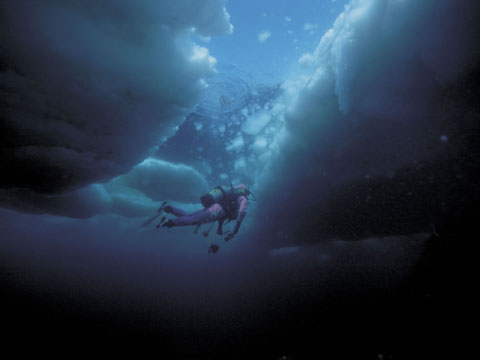
First is the Shiretoko Goko Lakes walk. You can walk aroud the five lakes of Shiretoko.
You will encounter the beauty and mystery of nature when you see the Shiretoko Mountain Range, animals, and drifting ice right in front of your eyes.
During severe winter, there are only guided tours by certified tour leaders. (The Elevated Wooden Path from earlier is not available)
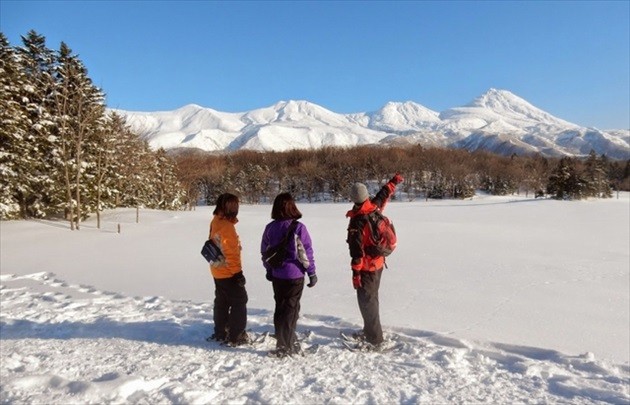
Besides the drifting ice cruises, the “drifting ice walk” is also available to let you experience drifting ice.
Dress in a dry suit and explore the drifting ice. Sometimes, you can float on the ocean with the drifting ice.
Seeing and experiencing drifting ice in person is a real thrill that is only available during this season.
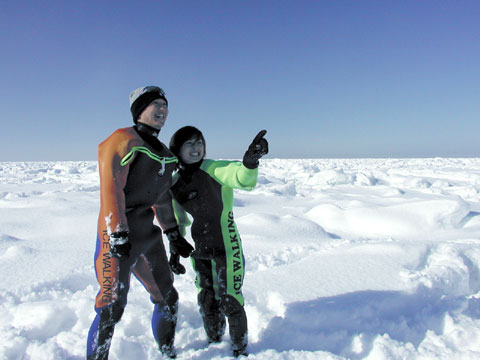
In Rausu, you can enjoy drifting ice and bird watching.
If you ride “Ever Green,” sea professionals, including the captain, who is a former fisherman and knows everything about the sea of Shiretoko, will give you a tour.
You can see white-tailed eagles and Stellar’s sea eagles. This is the only place in the Shiretoko Peninsula where you can go on a drifting ice sightseeing cruise and have such a precious experience.
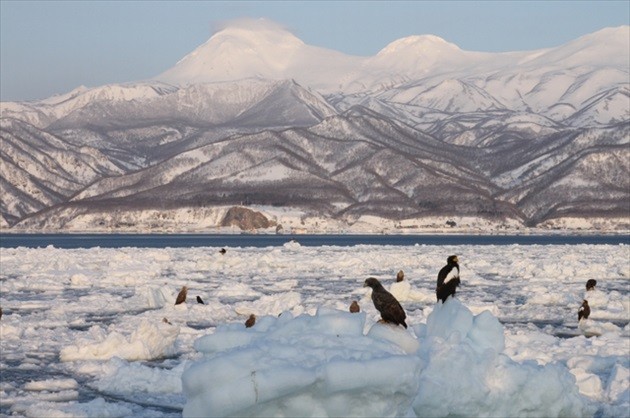
Step into the world of Shiretoko that’s only available in winter.
To experience winter in Shiretoko, please check websites for events and other information.
Japanese Cranes in Kushiro
Japanese cranes (tancho) represent Kushiro Marsh. Japanese cranes, the largest class of wild birds in Japan, are 1m40cm tall. They extend to 2m20cm to 2m4cm when they spread their wings.
Besides Eastern Hokkaido, Japanese cranes live in Russia and the northeast of China.
The word for the Japanese crane is written as “丹頂 (tancho)“ in Chinese characters and “丹 (tan)” means red and “頂 (cho)” means top.
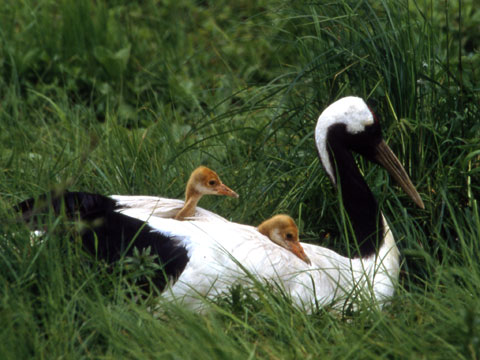
At “Japanese Crane Reserve Kushiro,” which opened for the conservation and propagation of Japanese cranes, you can see Japanese cranes regardless of the season. In early summer, you can see parent cranes with their children.
You can also encounter Japanese cranes at Tsurui-Ito Tancho Sanctuary.
(Open from October 1-March 31. Contact regarding closed dates)
There are spots where you can observe Japanese cranes regardless of the season. However, we would love you to see them in winter too, as you can see males and females doing courtship dances in February.

Numerous Japanese cranes visit the Tancho Observation Center in Akan Town during winter.
It is important to exhibit good manners when observing Japanese cranes. Although it is understandable to become happy when you see Japanese cranes, please remember to calmly observe them.
The Ice Line of Notsuke Peninsula

Jump on the the white ground!
In fact, this is not on the ground but above the ocean.
At Notsuke Peninsula, located at the edge of Eastern Hokkaido and famous for Todowara, the surface of Notsuke Bay—which is adjacent to the peninsula—becomes entirely frozen in winter and turns to white ground as far as the eye can see.
This is the “ice line” of Notsuke Peninsula, praised as the “Salar de Uyuni of Japan.”
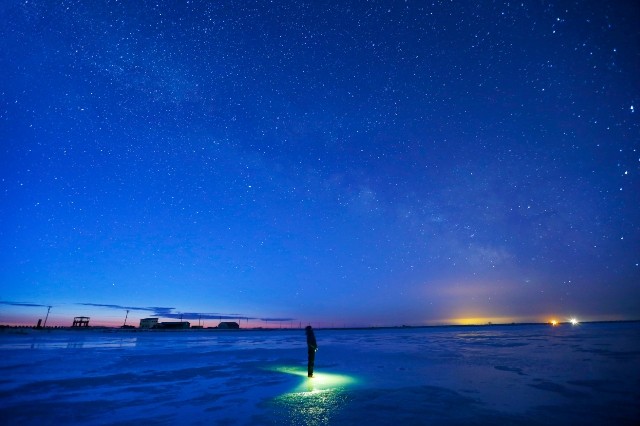
At Notsuke Peninsula Nature Center, guided tours are available.
You can say that it is something you can only experience here and only during this season.
How to get to Eastern Hokkaido
By airplane
First, we will tell you how to get to Eastern Hokkaido by airplane.
In Eastern Hokkaido, there are five airports, including Okhotsk Monbetsu Airport and Memanbetsu Airport. There are direct flights from Haneda Airport, which is conveniently located within a two-hour flight to each airport. It is best to choose which airport to use depending on your base of sightseeing.
Also, there are also flights from Sapporo (New Chitose Airport and Okadama Airport in Sapporo City), except for Okhotsk Monbetsu Airoprt. It is recommended to transfer at New Chitose to Eastern Hokkaido for travelers with a limited amount of time.
・First is Okhotsk Monbetsu Airport. This is the recommended base for visiting Mombetsu and the Lake Saroma area.
・Next is Memanbetsu Airport. There are connecting buses from the airport to Abashiri and Kitami. It is recommended to use this airport if you mainly plan to visit Abashiri and the Kitami area as well as the Shiretoko area.
・Next is Nakashibetsu Airport. It is located within a ten-minute drive from downtown Nakashibetsu. It is convenient when you visit the Nakatsu area as well as Shiretoko, Rausu, and the Nemuro area.
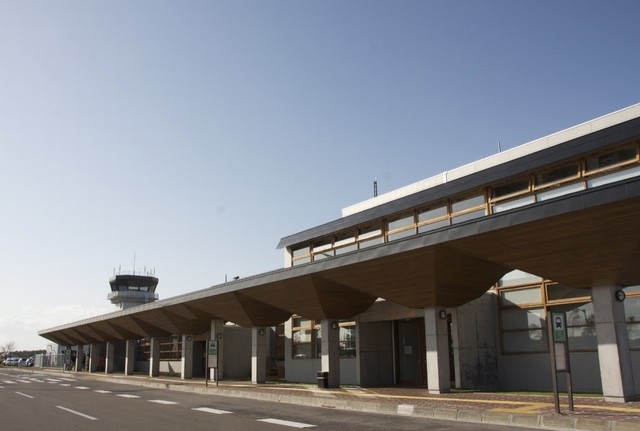
Photo of Nemuro Nakashibetsu Airport
・Next is Tancho Kushiro Airport. You will arrive in front of JR Kushiro Station in approximately 45 minutes if you ride a connecting bus. Connecting buses depart every 15 to 20 minutes after the arrival of the flight, so you can rest assured.
・Last is Tokachi Obihiro Airport. This airport is recommended if you mainly travel around Obihiro.
By train
・Tourist Trains
We’d like to introduce JR next. In the Eastern Hokkaido area, there are trains that you can enjoy according to the season: the “Kushiro Shitsugen Norokko train” from June through October and the “Steam Locomotive Fuyu no Shitsugen train (Winter train to Kushiro marsh)” in winter.
You will be able to enjoy the scenery of Kushiro River and Kushiro Marsh on the “Kushiro Shitsugen Norokko train.” Also, you can have a quaint trip with potbelly stoves on the Steam Locotive Fuyu no Shitsugen train.
As the train goes through Kushiro to Shibecha, you can see Kushiro Marsh in winter from the windows on the train.
Although the “Ryuhyo (drift ice) Norokko train,” which operated from the end of January through the end of February last year from Abashiri to Shari has come to an end, it has been released that the “Ryuhyo Monogatari train (the story of drift ice) will operate in 2017, just like the Ryuhyo Norokko train. Exciting, isn’t it?
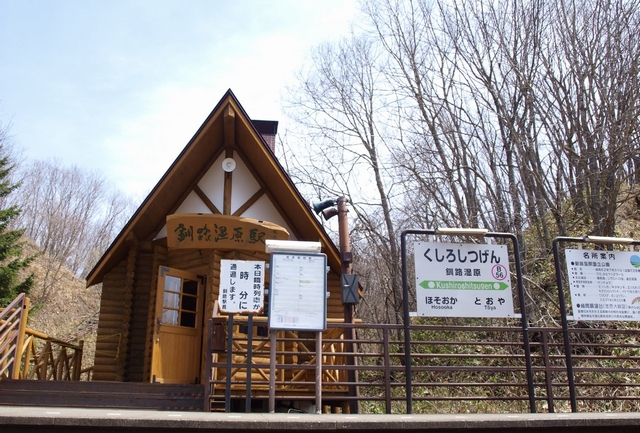
・Express Train between Sapporo and Eastern Hokkaido
There are mainly two lines that connect Sapporo and the Eastern Hokkaido area.
They are Express Okhotsk, which goes towards the north side of Abashiri, and Express Super Ozora and Super Tochika, which go toward the south side of Obihiro and the Kushiro area.
However, due to damage from a prior typhoon, it has been released that—as of October, 2016—there will be difficulty operating toward Obihiro and the Kushiro area until at least the end of November. There are currently trains and buses operating instead.
Due to damage from a prior typhoon, the Nemuro line trains have been canceled.
Please check the JR Hokkaido website at any time for the operational status of trains.
By intercity bus
Next, we’d like to introduce the intercity buses.
Buses are operating from Sapporo to each site, including Kushiro, Obihiro, Kitami Abashiri, and Shiretoko.
We recommend to take a bus once you arrive at Sapporo after landing in New Chitose Airport and go toward Eastern Hokkaido by intercity bus.
There are also night buses from Sapporo to Kushiro, Abashiri, and Shiretoko. So, if you depart from Sapporo at midnight, you will arrive at your destination, such as Kushiro, in the following morning. Arriving at your destination well rested can make for very efficient use of time.
If you have the right stamina, try out the night buses, too.
Advance reservation is required for the routes that have been introduced for the Hokkaido Chuo Bus.
Due to damage from a prior typhoon, there are more people using the buses and they may be crowded.
When planning your trip, it is better to make early reservations. If you plan to ride a bus, please contact the bus company in advance.

By car
Now, we’d like to tell you how to get to Eastern Hokkaido area by car.
It is recommended that you use highways to get to your destination, especially in a large prefecture like Hokkaido.
In April 2016, Doto Expressway and Kushiro Sotokan Rd. opened and now you can travel from Kushiro to Sapporo in 4 hours and 27 minutes.
Also, the opening of the Asahikawa-Monbetsu Expressway has made it convenient to travel to the Okhotsk area.
Although it is pleasurable to drive in dynamic Hokkaido, please be careful not to speed and make sure to take breaks to ensure a safe drive.
In Conclusion
What do you think of traveling to Northern Hokkaido? We introduced sightseeing spots in Eastern Hokkaido—including Shiretoko Peninsula, Lake Mashu, and Lake Kusharo—as well as highlights of winter, including drift ice and Shiretoko and information on events.
You will feel at ease simply by surrendering yourself to the magnificent scenery of Hokkaido.
Also, we would love you to try out things you can only experience in winter, such as a drift ice walk or drift ice cruise.
Winter tends to be much more severe than you think. So, please prepare for the cold weather. Regardless of the season, please visit Eastern Hokkaido






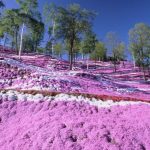
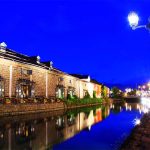
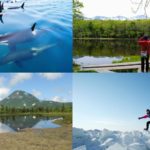
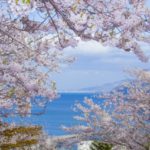
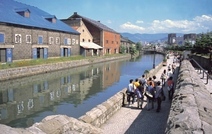
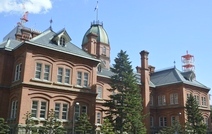
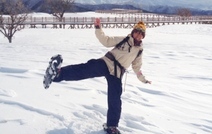
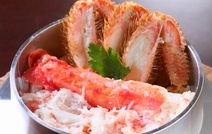

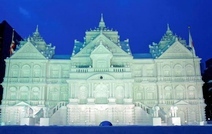
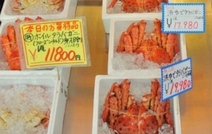

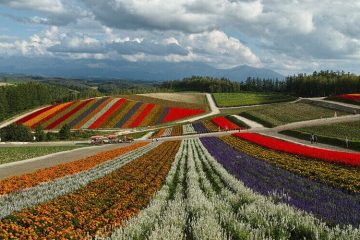
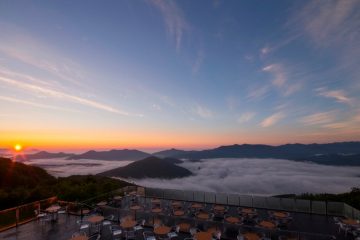
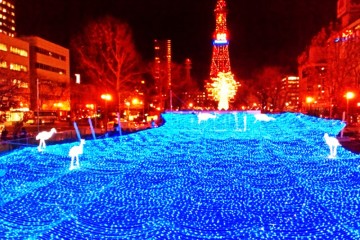
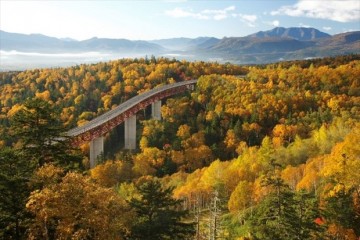
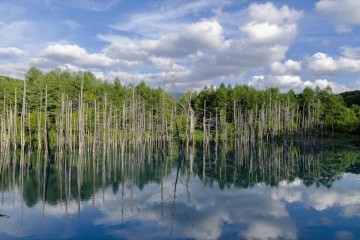




Please comment